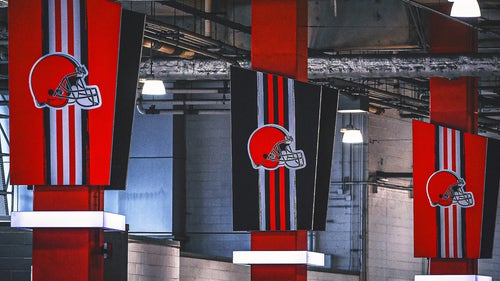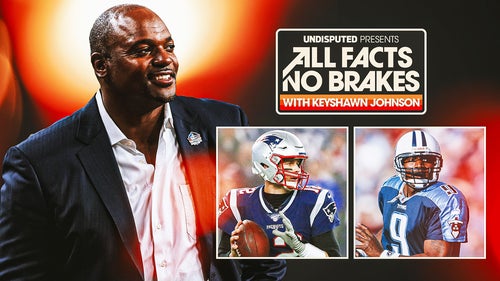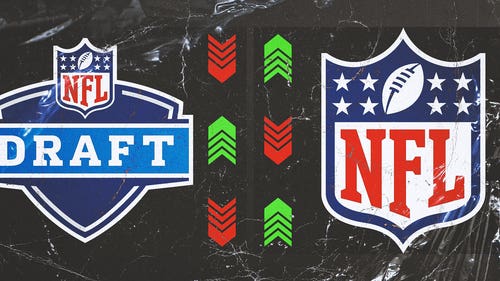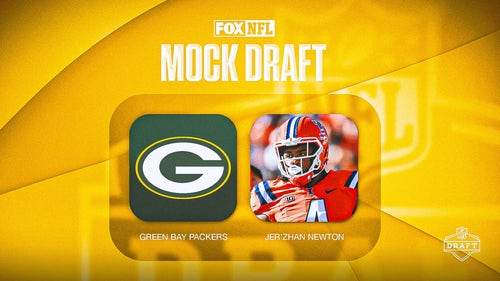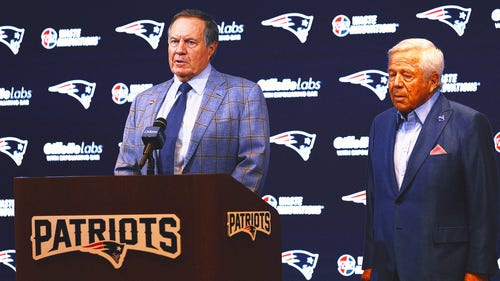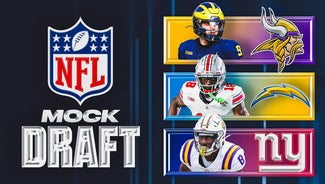
Nothing gleams like late-round draft gold

By Ken Pomponio
Here’s the deal with the NFL Draft: Take your blue-chip prospects, your sure-fire first- and second-round selections and your can’t-miss college All-Americans and forget about ’em.
Sure, they look nice and all that—especially after they’ve donned your favorite franchise’s new draft-night cap and beamingly posed with the commish—but there’s still something extra special about those diamonds discovered in the rough, those overlooked and under-appreciated late-round selections that turn out to be true unexpected finds.
These are the most rewarding picks and captivating stories of the draft—and the best and brightest of these picks already have achieved legend status:
Super Bowl championships, MVP awards, All-Pro recognition and even Hall of Fame gold jackets—you know the rest of these particular storybook, almost-too-good-to-be-true tales.
Still, also know that the list doesn’t end there. While the Bradys, Davises, and Dents are the undisputed cream of the late-round draft crop, there are a litany of largely ignored and written-off late-round picks who have stunningly blossomed into Pro Bowl players and long-term starters—often eclipsing the accomplishments of more ballyhooed players taken 150–200 picks earlier.
That in mind, the aim here is to answer the follow-up questions:
For the answers, we’ve started with the 2012 draft—giving players at least three seasons to establish their NFL identities—and pored over the previous two decades of drafts to chart the draft choices who have distinguished themselves from the late-round (fifth round and later) draft pack. To qualify as late-round standout, a draft pick has had to either: a) Amass 75 or more career pro starts (shortened to 60 for running backs to factor in the shorter shelf lives); b) Have garnered at least one first-team All-Pro or multiple Pro-Bowl berths; or c) Have a Pro Football Reference weighted approximate value of at least 50—a grading system used to help put the hard-to-quantify accomplishments of offensive linemen and other not-so-stat-dependent positions into comparative perspective.
Naturally, the criteria are somewhat biased against the players entering the league in recent drafts as the remainder have had more opportunity to build their pro résumés. Overall, though, applying these criteria, 146 NFL draft picks from 1993–2012 have been identified as late-round surprises who went on to have better-than-average NFL careers, and here’s how it all shook out:
Centers of Attention
In terms of sheer numbers, offensive guards (19), linebackers (16) and safeties (15) topped the positional list among our 146 late-round standouts from 1993–2012.
There were also 14 defensive ends, 14 defensive tackles, 13 centers, and 12 wide receivers. The rest of the 146 are comprised of 10 cornerbacks, eight offensive tackles, seven quarterbacks, seven kicking specialists, six running backs, and five tight ends.
But to get a true measure, we need to factor in the percentages.
Overall, Pro Football Reference comes up with 2,316 players drafted in the fifth through eighth rounds (’93 only) during that 20-year time frame. Here’s the positional breakdown, ordered by highest percentage of standouts produced (note that the site doesn’t distinguish between cornerbacks and safeties, likely due to the interchangeability):
First, to note, the wide receiver category includes three players—most notably the Chiefs’ Dante Hall—who went on to stand out primarily as special-teams standouts/kick returners, while one defensive back falls into that category as well.
Otherwise, the center crop—headed by two-team first-team All-Pro Tom Nalen (Broncos, seventh-round, 1994) and six-time Pro Bowler Matt Birk (Vikings, sixth, ’98)—certainly stands out, and the group of guards—topped by a pair of Packers’ picks in 172-game starter Adam Timmerman (seventh, ’95) and three-time Pro Bowler Marco Rivera (sixth, ’96)—isn’t too shabby, either.
On the other end of the spectrum, Frank Wycheck (Redskins, sixth round, ’93) and Brent Celek (Eagles, fifth, 2007) were among the few recent late-round tight ends who have gone on to have much-better-than-expected pro careers while Davis, Michael Turner (Chargers, fifth, ’04) and current Washington starter Alfred Morris (sixth, 2012) head the short list of late-round standout RBs who met the criteria.
The quarterback contingent, meanwhile, is topped by Brady and also includes Mark Brunell (Packers, fifth, ’93), Trent Green (Chargers, eighth, ’93), Matt Hasselbeck (Packers, sixth, ’98), Marc Bulger (Saints, sixth, ’00), Gus Frerotte (Redskins, seventh, ’94) and current Jet Ryan Fitzpatrick (Rams, seventh, ’05).
Head of the (Draft) Class: ’93 and ’00 Rule
Again, admittedly, the criteria by default are going to identify more late-round standouts from the earlier draft classes due to the reality that the careers of players from more recent draft classes (2007–12 and even the few prior) are still works in progress.
That established, though, the 1993 and 200 contingents stand out above the rest in our 20-year study.
Thanks in part to the extra round—the draft wouldn’t adapt its current seven-round format until a year later in 1994—the class of ’93 produced 17 of our 146 late-round standouts, including the two quarterbacks in Brunell and Green, running back Adrian Murrell (Jets, fifth round), wide receiver Troy Brown (Patriots, eighth), Wycheck and five-time Pro Bowl linebacker Jessie Armstead (Giants, eighth) and multi-Pro Bowl safeties Blaine Bishop (Oilers—yes, Oilers—eighth round) and Brock Marion (Cowboys, seventh).
Not a bad late-round haul.
Then, seven years later, another late-round bumper crop came along in the draft class of 2000. Brady and Bulger emerged—to varying degrees—as late-round QB finds, and the class also included six-time first-team All-Pro punter Shane Lechler (Raiders, fifth), the early 2000s return monster Hall (Chiefs, fifth), stud linebacker Adalius Thomas (Ravens, sixth), offensive tackle Mark Tauscher (Packers, seventh), linebacker Dhani Jones (Giants, sixth) and kicker Neil Rackers (Bengals, sixth).
Pack Display Knack for Finding Late-Round Talent
Donald Driver … Brunell … Aaron Kampman … Timmerman … Levens—as you might’ve noticed from the ground we’ve already covered, the Green Bay Packers have shown a definite proficiency for uncovering late-round draft talent.
The Pack, in fact, led the league by drafting 11 players on our list of 146 late-round standouts from 1993–2012. Overall, a full 20 of the team’s 90 fifth- through eighth-round selections during that span have gone on to start at least 40 NFL games and 10 have earned Pro Bowl nods.
That 40-start contingent also includes the likes of wide receiver Bill Schroeder and defensive end Kabeer Gbaja-Biamila, and the majority of those 20 players—aside from the obvious exceptions of Brunell and Hasselbeck—have played most of their careers in Green Bay.
Three other franchises—the Steelers (most notably Antonio Brown), Falcons (Jamal Anderson), and Giants (David Diehl)—originally drafted seven players apiece on the late-round list of 146, and 12 other teams are represented by at least five draftees.
Twelve of those 16 teams—led by the Packers at No. 2—rank among the league’s top half in winning percentage from 1993–2012.
Pure coincidence?
We think not.
Small Schools Big on Producing Late-Round Gems
So just where are these late-round draft finds coming from?
On our list of 146, schools from the current power five conferences still rule, naturally, producing 88—or 60.2 percent—of the 146 players.
Tennessee—led by Scott Wells and Gibril Wilson—has produced five late-round standouts—while Illinois (Diehl), Stanford (Richard Sherman) and Boston College (Hasselbeck) are represented by four apiece.
Overall, when it comes to conferences, the current members of the SEC—surprise!—and Big Ten lead with 21 players apiece among the group of 146, while the Pac-12 has produced 19, the ACC 15 and the Big 12 has, well, 12.
But that dominance isn’t as pronounced as it is in earlier rounds. Another 33 of the 146 (22.6 percent) hail from colleges in the remaining five FBS conferences, and 25—or a very solid 17.1 percent—call a current non-Division I school as their alma mater. That big-fish-little-pond group includes Driver (Alcorn State), Marques Colston (Hofstra), Robert Mathis (Alabama A&M), Rodney Harrison (Western Illinois), and Cortland Finnegan (Samford). So when you watch the draft next week, pay attention even when your team drafts a player you’ve never heard of from a school you’ve never heard of. He could very well be your team’s next star.
Information courtesy of pro-football-reference.com.
More from The Sports Post:







































































































































